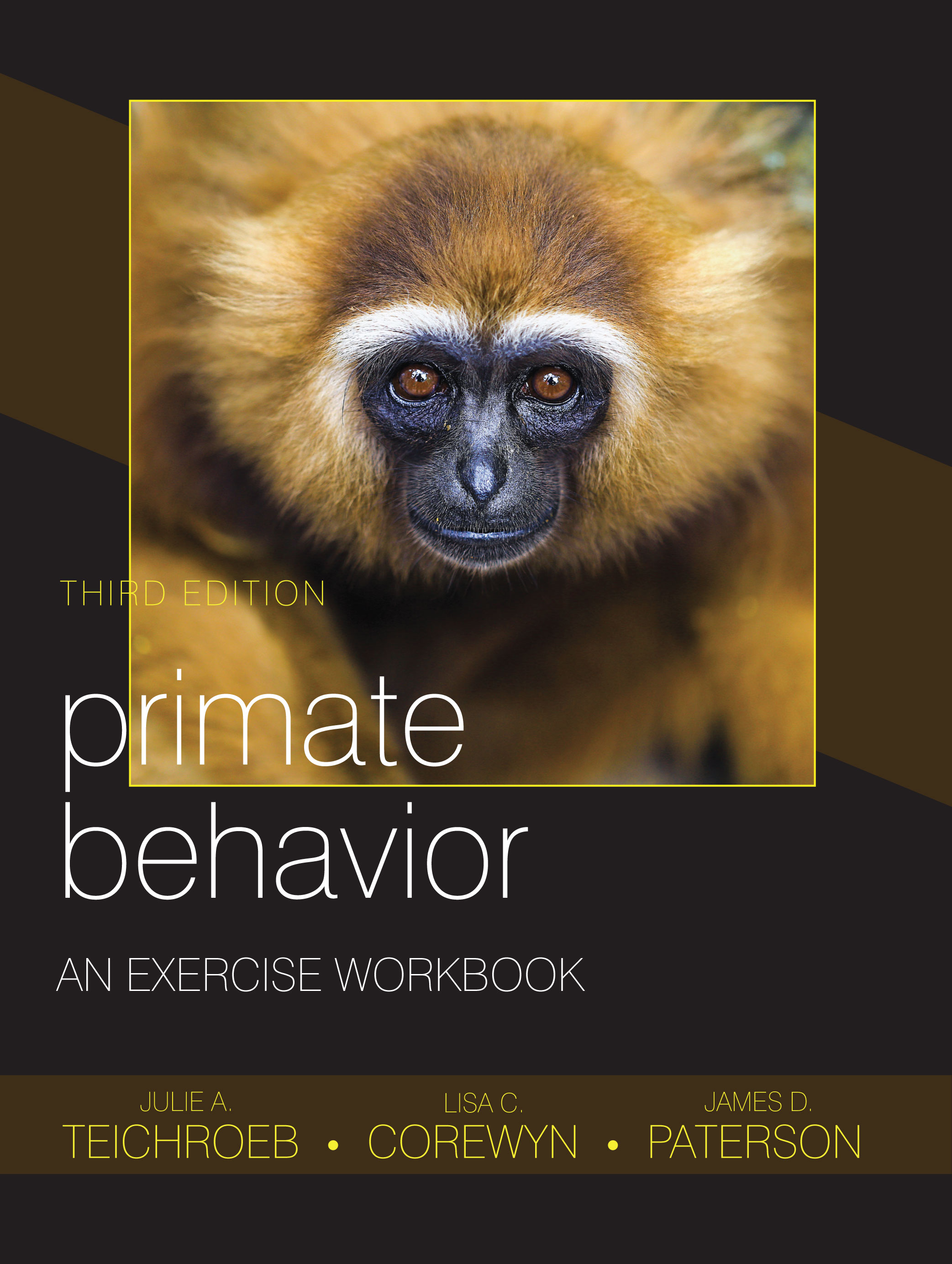
258 pages, $45.95 list
1-4786-4009-X
978-1-4786-4009-7
© 2021
paperback
eBook availability
Primate Behavior
An Exercise Workbook
Third Edition
Primate Behavior is an introductory workbook that serves as a detailed guide for conducting scientific behavioral studies. A thoughtful overview of the concepts, skills, and techniques researchers use is followed by 21 classroom-tested exercises. Varied examples encourage readers to apply their newfound knowledge to determine and implement appropriate strategies. Online materials include relevant forms for recording and presenting research data as well as training video samples.
Thoroughly updated, the Third Edition introduces the latest technology for data collection, software options when storing, compiling, and analyzing data, and ethical responsibilities in the field. New authors Julie Teichroeb and Lisa Corewyn build on James Paterson’s foundational work to rigorously, responsibly, and enthusiastically prepare students for today’s landscape with an emphasis on accuracy, precision, and effective communication of results.
Thoroughly updated, the Third Edition introduces the latest technology for data collection, software options when storing, compiling, and analyzing data, and ethical responsibilities in the field. New authors Julie Teichroeb and Lisa Corewyn build on James Paterson’s foundational work to rigorously, responsibly, and enthusiastically prepare students for today’s landscape with an emphasis on accuracy, precision, and effective communication of results.
Reactions
“I am very excited for students to work with the new edition. The thorough updates on data analysis and management as well as new material such as biological sampling methods are especially welcome. The exercises remain essential tools for teaching the fundamentals of behavioural observation techniques and, more generally, getting students engaged in and excited about the research process. Five stars!” — Steig Johnson, University of Calgary
Part I. THE STUDY OF BEHAVIOR
1. An Introduction to the Observation of Nonhuman Primate Behavior
2. Methodology in Primate Observation
3. Defining, Describing, and Coding Behavior
4. Measuring Social Behavior
5. Biological and Morphological Sampling
6. A Statistical Primer
7. The Preparation of Scientific Reports: A Beginner’s Guide
8. Technological Applications for Observational Data Collection
9. Software and Methods of Data Storage, Compilation, and Analyses
10. Field Gear, Equipment, and Accessories
Part II. EXERCISES
BASIC STUDIES: Preliminaries Necessary to All Research
Exercise 1: Animal Identification: Learning Faces and Bodies
Exercise 2: The Ethogram: A Basic Behavior Inventory
Exercise 3: The Observing Schedule
GROUP COMPARATIVE STUDIES: Appreciating the Differences between Species
Exercise 4: The Behavior Profile: A Comparative Study
Exercise 5. Time Budget: A State Behavior Duration Exercise
MAJOR MODES OF OBSERVATIONAL METHODS: Learning to Sample Effectively
Exercise 6: Scan Sampling: Instantaneous Scan Sampling of States of Behavior, or Interval Sampling
Exercise 7: One/Zero Sampling
Exercise 8: Focal Time Sampling: State Behavior Interval Sampling Procedure
Exercise 9: Focal Animal Sampling: Intensive Study of Behavior
Exercise 10: All Occurrences Sampling: Collecting Specified Forms of Behavior
Exercise 11: Matched Control Sampling
Exercise 12: Combining Data Collection Techniques
TESTING AND ANALYSIS: Tools for Understanding Behavior
Exercise 13: Interobserver Reliability Testing: Do Two People See the Same Things?
Exercise 14: Measures of Association
Exercise 15: A Phenological Transect Survey: What Plants Are in Which Phases of Their Cycles in the Area?
Exercise 16: A Home Range Survey: What Is the Group’s Home Range? A Comparison of Methods
Exercise 17: Ecological Sample Plots and Indices
Exercise 18. Vegetative Sampling and Voucher Specimens
APPLIED STUDY PROJECTS: Branching Out into Research Design
Exercise 19: A Spatial Location Study
Exercise 20: Exploring Postural Congruence
Exercise 21: A Handedness Study
1. An Introduction to the Observation of Nonhuman Primate Behavior
2. Methodology in Primate Observation
3. Defining, Describing, and Coding Behavior
4. Measuring Social Behavior
5. Biological and Morphological Sampling
6. A Statistical Primer
7. The Preparation of Scientific Reports: A Beginner’s Guide
8. Technological Applications for Observational Data Collection
9. Software and Methods of Data Storage, Compilation, and Analyses
10. Field Gear, Equipment, and Accessories
Part II. EXERCISES
BASIC STUDIES: Preliminaries Necessary to All Research
Exercise 1: Animal Identification: Learning Faces and Bodies
Exercise 2: The Ethogram: A Basic Behavior Inventory
Exercise 3: The Observing Schedule
GROUP COMPARATIVE STUDIES: Appreciating the Differences between Species
Exercise 4: The Behavior Profile: A Comparative Study
Exercise 5. Time Budget: A State Behavior Duration Exercise
MAJOR MODES OF OBSERVATIONAL METHODS: Learning to Sample Effectively
Exercise 6: Scan Sampling: Instantaneous Scan Sampling of States of Behavior, or Interval Sampling
Exercise 7: One/Zero Sampling
Exercise 8: Focal Time Sampling: State Behavior Interval Sampling Procedure
Exercise 9: Focal Animal Sampling: Intensive Study of Behavior
Exercise 10: All Occurrences Sampling: Collecting Specified Forms of Behavior
Exercise 11: Matched Control Sampling
Exercise 12: Combining Data Collection Techniques
TESTING AND ANALYSIS: Tools for Understanding Behavior
Exercise 13: Interobserver Reliability Testing: Do Two People See the Same Things?
Exercise 14: Measures of Association
Exercise 15: A Phenological Transect Survey: What Plants Are in Which Phases of Their Cycles in the Area?
Exercise 16: A Home Range Survey: What Is the Group’s Home Range? A Comparison of Methods
Exercise 17: Ecological Sample Plots and Indices
Exercise 18. Vegetative Sampling and Voucher Specimens
APPLIED STUDY PROJECTS: Branching Out into Research Design
Exercise 19: A Spatial Location Study
Exercise 20: Exploring Postural Congruence
Exercise 21: A Handedness Study